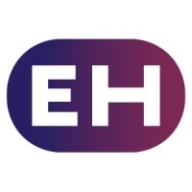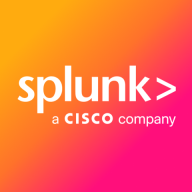

Splunk AppDynamics and ExtraHop Reveal(x) compete in IT operations, focusing on monitoring and analytics. AppDynamics excels in data integration and comprehensive analytics, while ExtraHop is superior for real-time visibility and network traffic analysis.
Features: Splunk AppDynamics integrates data smoothly and provides powerful analytics, detailed application performance management, and seamless data monitoring capabilities. ExtraHop Reveal(x) offers real-time visibility into network traffic, advanced threat detection analytics, and network traffic insights, making it ideal for security-focused operations.
Room for Improvement: Splunk AppDynamics could benefit from enhanced network traffic analysis features, improved customization options for security analytics, and refined real-time monitoring capabilities. ExtraHop Reveal(x) could enhance its data integration with third-party applications, expand its analytics capabilities beyond network traffic, and streamline its application performance tracking.
Ease of Deployment and Customer Service: Splunk AppDynamics offers flexible deployment with comprehensive support, praised for its integration processes. ExtraHop Reveal(x) is straightforward to deploy with efficient customer service, focusing on rapid and secure implementation, catering to different operational needs.
Pricing and ROI: Splunk AppDynamics is competitively priced, offering substantial ROI through resource management and reduced downtime. ExtraHop Reveal(x) is positioned at a premium price, justified by its strong security features and immediate ROI in threat mitigation. While Splunk is known for cost-effectiveness, ExtraHop provides excellent ROI in environments prioritizing security and real-time analytics.
| Product | Market Share (%) |
|---|---|
| Splunk AppDynamics | 18.6% |
| ExtraHop Reveal(x) for IT Operations | 3.1% |
| Other | 78.3% |


| Company Size | Count |
|---|---|
| Small Business | 3 |
| Midsize Enterprise | 2 |
| Large Enterprise | 3 |
| Company Size | Count |
|---|---|
| Small Business | 55 |
| Midsize Enterprise | 36 |
| Large Enterprise | 189 |
The ExtraHop Application Performance Management Solution Delivers Unified Visibility Across the IT Environment w/ Proactive Alerts & Accelerated Troubleshooting
Splunk AppDynamics enhances application performance monitoring with advanced diagnostics and real-time insights, offering seamless end-to-end transaction tracking and infrastructure visibility.
AppDynamics provides critical tools for businesses to analyze application behavior and performance. Through innovative features like transaction snapshot analysis and adaptable dashboards, users can quickly identify and address issues, ensuring high levels of system uptime and efficiency. It is designed to support complex environments including Kubernetes and AWS, enhancing user experience by detecting performance issues early. Despite needing improvements in network monitoring and integration, it remains a robust option for tracking application health.
What are the key features of AppDynamics?In industries like financial services and e-commerce, AppDynamics facilitates performance tracking across distributed systems, optimizing infrastructure to meet consumer demands. It excels in environments needing precise transaction monitoring and is pivotal in delivering high value and satisfaction.
We monitor all IT Operations Analytics reviews to prevent fraudulent reviews and keep review quality high. We do not post reviews by company employees or direct competitors. We validate each review for authenticity via cross-reference with LinkedIn, and personal follow-up with the reviewer when necessary.